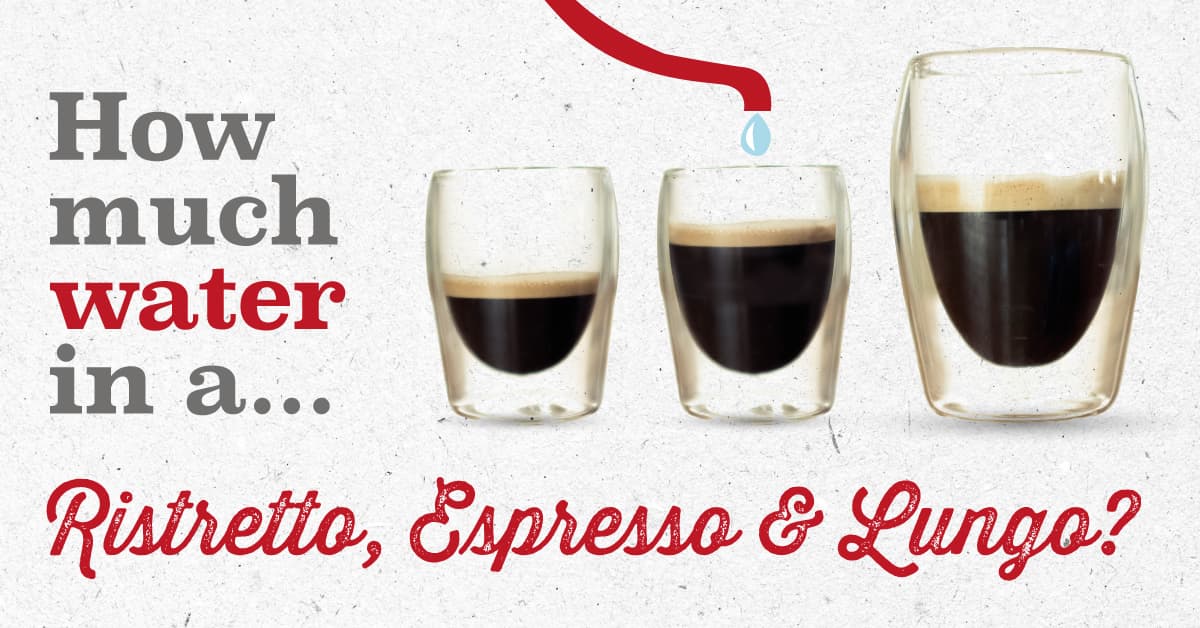

This means that there are more than 150 million daily coffee drinkers in the USA alone. Learn more about our process hereĪccording to statistics, more than 50% of Americans, age 18 plus, drink coffee every day. We may earn a commission through products purchased using links on this page. The flavor and smoothness the milk contributes come through more than the bitterness of either type of shot.CoffeeVibe is reader-supported. When it comes to an espresso beverage like a latte or cappuccino, you won’t be able to tell the difference as much between espresso and ristretto shots. Depending on the roast you use when pulling the shots, you can get even more distinct notes. It has more caffeine and a stronger, chocolaty flavor in comparison. On the other hand, a shot of espresso has a more balanced flavor thanks to its body, head, and crema.They technically have less caffeine because they have less liquid, so you may want to double up. Ristretto shots are sweeter than espresso and easier for most people to drink. If you like to drink espresso on its own and not in a drink, you may enjoy a ristretto shot.Now that you know more about espresso and ristretto shots, you can make a more informed decision the next time you visit your local coffee shop. The concept of ristretto shots didn’t make its way here until the early 1990s, when David Schomer introduced them to Seattle, Washington.įeeling adventurous? Here are 79 types of coffee drinks.ĭeciding which beverage is better is up to you and your tastes. The first espresso machine, and thus espresso itself, was brought to New York in 1927. Though both espresso and ristretto originated in Italy, they arrived in the United States at different times. Most people will add an extra ristretto shot when they order it as a result.īoth espresso and ristretto are small enough to fit into a small cup if you order them plain. The difference in quantity can be between 0.25-0.5 ounces depending on where you go. Volumeīecause baristas produce these shots using different quantities of water, the shots vary in volume.

Ristretto shots also have more crema than espresso shots. The sweet, fruity flavors have time to come out, but the more bitter, chocolaty flavors stay inside. A ristretto shot is shorter, so it releases less acidity. Ristretto shots taste sweeter and less acidic than espresso shots. The temperature of the water and the length of time the water touches the coffee determine the flavor. TasteĮven though you make espresso and ristretto from the same beans and use similar brewing methods, there’s a distinct difference in taste. Therefore, a ristretto shot is 0.5-0.75 fluid ounces. It takes half to three-quarters of the water that a regular shot of espresso does. Here’s where the espresso and the ristretto differ: ristretto is made the same way, but uses less water and takes less time (15-20 seconds). That means you need one ounce of water when pulling a shot, or the espresso will taste too bitter. Ideally, a well-functioning espresso machine will produce a single one-ounce espresso shot in 25-30 seconds. The amount of water that goes into each shot varies based on who prepares it and how strong the espresso is. The water temperature may vary, but the National Coffee Association recommends using water between 195-205 ℉. The result is a shot of concentrated, caffeinated liquid for your drinking pleasure. Brew Methodīaristas prepare espresso by finely-grinding coffee beans, tamping those grinds, and then forcing hot water through the grinds by applying pressure.

4 Key Differences: Ristretto vs EspressoĮspresso and ristretto are much more similar than they are different.ĭespite the similarities, each has distinct features that can help you distinguish one from the other. They also arrived in the United States at different times. Naturally, you also wind up with a smaller amount of coffee. You do the same for ristretto, however, you use less water when making a ristretto shot, which alters the taste of the coffee.To make espresso, you force hot water through finely-ground coffee.The differences between them start with how you brew each one. Although they are similar, ristretto and espresso are each unique in their way.


 0 kommentar(er)
0 kommentar(er)
